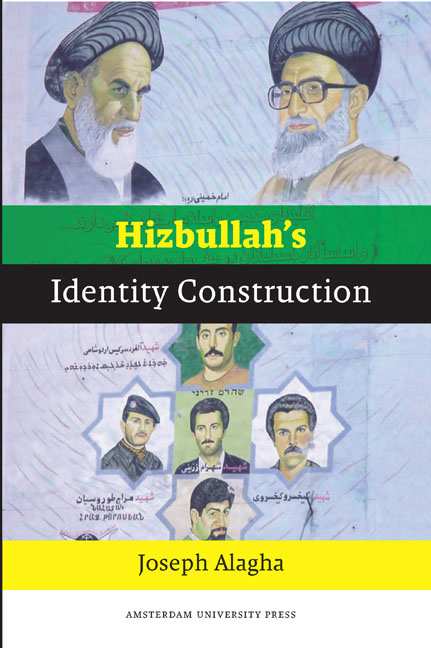Book contents
- Frontmatter
- Dedication
- Contents
- A Note on Transliteration
- Acknowledgements
- List of Abbreviations
- Summary
- Introduction and Analytical Framework
- 1 Tolerance and Discrimination: Ahl Al-Dhimma in the Islamic Order
- 2 Interpretation and Authority: Wilayat Al-Faqih
- 3 Political Violence: Terrorism and 9/11
- 4 Political Violence: Suicide Operations
- 5 From Cooptation to Contestation to Political Power
- 6 The Doha 2008 Accord and its Aftermath
- 7 The Eighth Conclave: A New Manifesto (November 2009)
- 8 Epilogue: Future Prospects – Disarmament and the Peace Process
- Afterword
- Glossary
- Additional Reading
- Notes
- Selected Bibliography
- Index
- Praise for Hizbullah's Identity Construction (1978-2010)
2 - Interpretation and Authority: Wilayat Al-Faqih
Published online by Cambridge University Press: 19 January 2021
- Frontmatter
- Dedication
- Contents
- A Note on Transliteration
- Acknowledgements
- List of Abbreviations
- Summary
- Introduction and Analytical Framework
- 1 Tolerance and Discrimination: Ahl Al-Dhimma in the Islamic Order
- 2 Interpretation and Authority: Wilayat Al-Faqih
- 3 Political Violence: Terrorism and 9/11
- 4 Political Violence: Suicide Operations
- 5 From Cooptation to Contestation to Political Power
- 6 The Doha 2008 Accord and its Aftermath
- 7 The Eighth Conclave: A New Manifesto (November 2009)
- 8 Epilogue: Future Prospects – Disarmament and the Peace Process
- Afterword
- Glossary
- Additional Reading
- Notes
- Selected Bibliography
- Index
- Praise for Hizbullah's Identity Construction (1978-2010)
Summary
ABSTRACT
After three decades of the ‘victory’ of the Islamic Revolution in Iran it is worthwhile to study how Imam Khumayni's initial theory of wilayat al-faqih has developed in the political thought of Hizbullah as regards to the framework of molding and interpreting the original theory to make it adaptable to the Lebanese social and political conditions. Hizbullah employed wilayat alfaqih as a cornerstone in its religious-political ideology from 1978 to the present. The party managed to mold the doctrine through the successive changes in the political system by shifting its ideology in order to become a key player capable of affecting the dynamic changes taking place in the Lebanese public sphere. Although it is assumed in many circles that Hizbullah is the proxy of Syria and Iran, concentrating on the assumed Iranian influence, this chapter argues that Hizbullah pursued an independent course of action in its attempt to influence the Lebanese political system.
INTRODUCTION
Most secondary sources brand Iran and its contended “brainchild”, the Lebanese resistance movement Hizbullah, with militant revolutionary tendencies, which do not conform to the tenets of the international community's standards of democratic values that govern civil society. Is Hizbullah an Iranian party operating in Lebanon, or a Lebanese militant party supported by Iran, which has to obey Iran and be its tool of policy in the Middle East?
Hizbullah was able to modify its identity from its founding as an Islamic movement of social and political protest (1978-1985), to a full-fledged social movement (1985-1991), to a parliamentary political party (1992 to the present). Hizbullah tried to preserve its Islamic identity, and at the same time, work within the confines of the Lebanese political system. On these grounds, the party recognized the Lebanese state. In spite of being perceived as having a political-strategic partnership with Syria and a strategic-ideological alliance with Iran, Hizbullah is not a mere tool of policy in Syrian and Iranian hands. On the contrary, the party has pursued an independent course of decision making in conformity with the specificities (khususiyyat) of the Lebanese political equation, until it succeeded in May 2008 in obtaining veto power in the cabinet, the council of ministers, the main executive body of the country, thus controlling the political system to a greater extent.
- Type
- Chapter
- Information
- Hizbullah's Identity Construction , pp. 45 - 60Publisher: Amsterdam University PressPrint publication year: 2012

